As global trade continues to expand, ports face increasing pressure to efficiently manage the vessels entering their facilities. Due to recent regulatory framework changes, there is a need for extended security at ports.
OCIANA™ is a comprehensive solution for port management. The platform provides early risk detection to prioritize the monitoring of vessels of interest and thereby mitigate illegal activity. This proactive approach enables ports to allocate their resources more effectively to prevent potential security and safety risks. OCIANA™ leverages real time analytics thus facilitating decision making and alignment with the global trend towards digitalized platforms.
Port Visit History
OCIANA™ constantly tracks worldwide vessel activities and leverages data analysis to empower users in making informed decisions. OCIANA’s port visit history feature allows users to assess the potential risk associated with vessels arriving at the port. By examining a vessel’s recent activity and its history of visiting different ports over the past two years, users gain insights into its frequency of visits and length of stay at all ports around the world. Additionally, users can set up geofences to receive notifications when a vessel had visited specific ports the user may flag, allowing for proactive risk assessment.
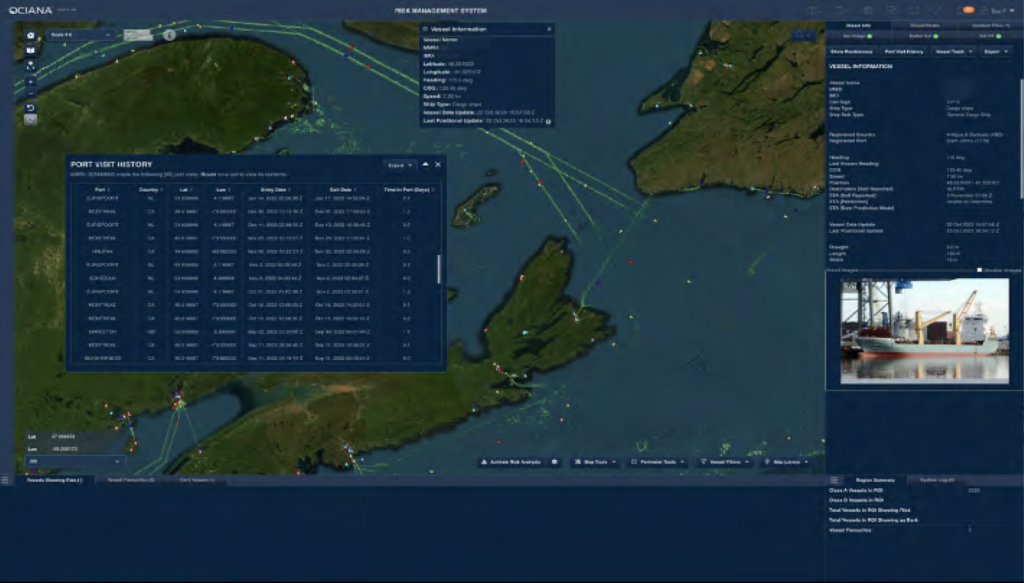
Enhanced AIS Anomaly Detection
A vessel turning off its AIS, known as “going dark, can be a red flag for potential illicit activities. OCIANA™ addresses this challenge by offering enhanced AIS anomaly detection. Rather than flagging all vessels that temporarily disable their AIS, OCIANA™ analyzes individual vessel’s historical behavior and the regions it has visited. This approach reduces false alarms and focuses on vessels that genuinely exhibit abnormal behavior.
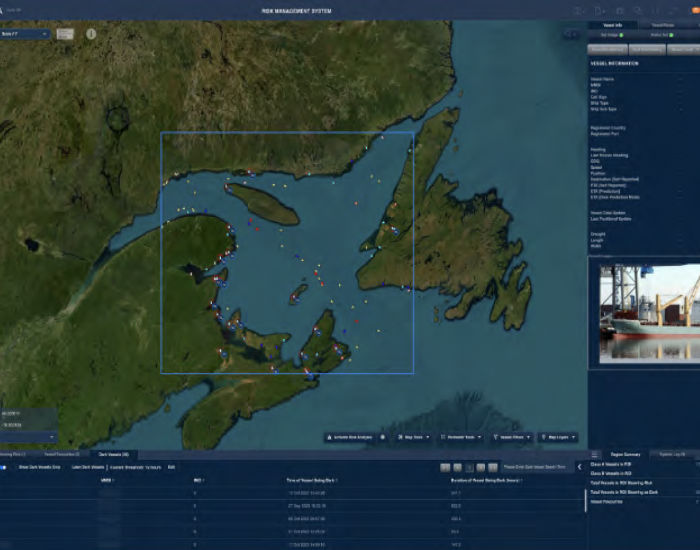
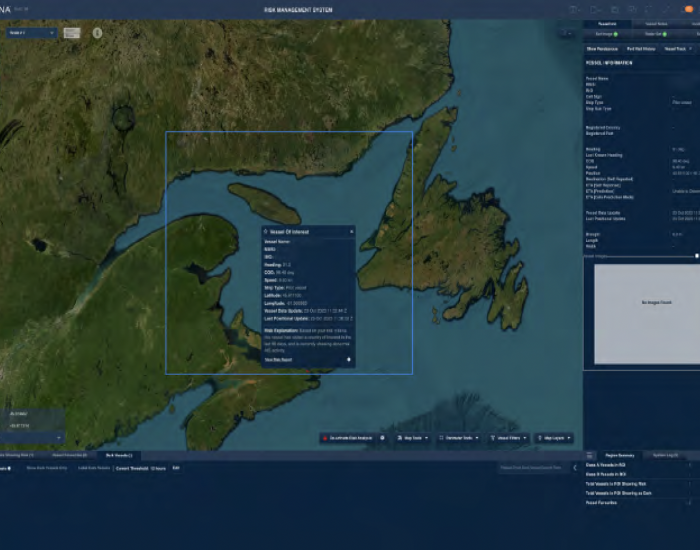
Satellite Imaging and Dark Vessel Identification
With the increasing availability of satellite imagery, it has become harder for vessels to conceal their positions. OCIANA™ integrates true-color and Synthetic Aperture Radar (SAR) imagery for ports, providing a comprehensive overhead view of the entire area. A machine learning model is applied to identify vessels in these images, and their positions are cross-referenced with AIS data. This allows OCIANA™ to flag dark vessels that are not reporting their positions despite being detected in the imagery, prompting further investigation.

Customized Risk Reports
OCIANA™ goes a step further in enhancing port security by offering users the capability to generate a variety of custom risk reports. These reports can be based on countries of interest, vessel rendezvous, AIS anomaly and other user specific needs and preferences. The platform then compiles comprehensive risk reports in PDF format thus facilitating a valuable resource for informed decision-making and information sharing. These reports not only highlight vessels that have been flagged as risks but also provide detailed explanations for each vessel, outlining the specific reasons and contributing factors behind the risk designation. This transparency in risk assessment empowers users to make strategic decisions and fosters efficient communication among stakeholders, ensuring that all stakeholders are on the same page regarding potential security and safety concerns.
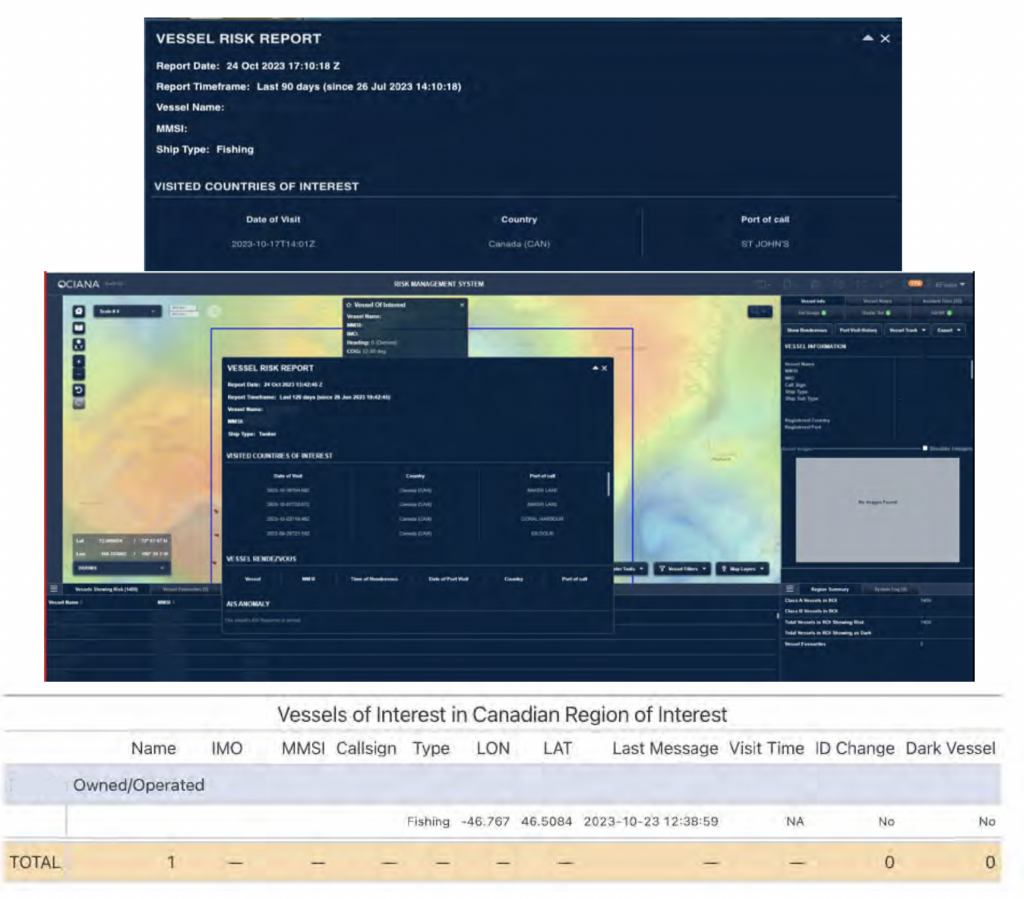
Advanced Chat and Collaboration Tools
OCIANA™ serves as a collaborative platform, facilitating communication and information sharing among users from different organizations. It supports features like chat, data sharing, incident reporting, and notifications regarding vessels of interest. This capability is especially beneficial for collaboration between security agencies and ports. Using OCIANA™, all stakeholders can collaborate effectively by sharing vessel information, adding notes, and forwarding findings to relevant parties. This seamless cross-organizational cooperation ensures that critical information is disseminated promptly to the appropriate authorities when a concerning vessel is identified.

Vessel Documentation Check
OCIANA™ also streamlines communication between ships and ports. Vessel credentials can be uploaded into the platform, allowing ports to quickly verify the status and validity of required documentation. This not only expedites the port monitoring process but also flags vessels with outdated or missing credentials, necessitating further investigation prior to port entry.
Schedule Optimisation Planner
In situations where a flagged vessel requires thorough inspection, it can strain port resources and disrupt operations. OCIANA’s Schedule Optimisation Planner empowers port users to plan the sequence for incoming vessels when a berth is allocated for inspection. This planning approach ensures continuous vessel throughput and minimizes disruptions to port operations when searches are necessary.

In conclusion, OCIANA™ offers a comprehensive suite of capabilities to enhance port safety and security. By enabling the identification of vessels in need of further investigation based on their activity, monitoring, and history, it aids in mitigating disruptions and risks to port operations.
Contact us to learn more today: sales@gsts.ca



